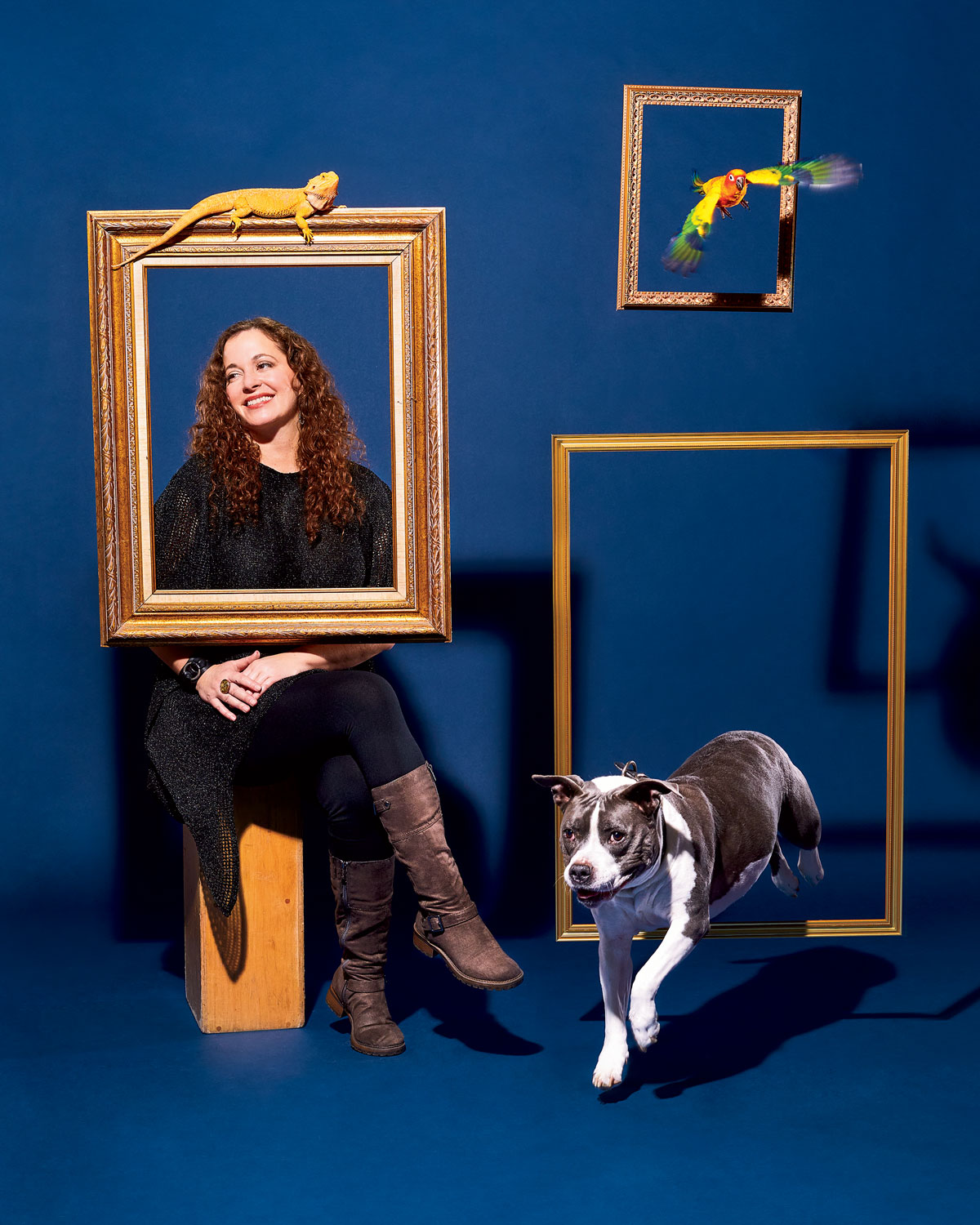 Photograph: Jason Little
Photograph: Jason Little
There’s an element of surprise on every shoot. A dog once lifted his leg and peed on my strobe lighting pack, and a cat peed in the cloth paper catch of one of my huge printers.
Animals have amazing texture, so it’s best not to light them straight on with one light because it flattens out their fur, feathers, or skin.
I traveled to Montana once to photograph a pack of wolves during a snowstorm. There was a trainer on set, but they’re still wild animals. At the start, the wolves ran off over a mountain, and I thought for sure the shoot was over. But the trainer and two helpers hopped on snowmobiles and returned two hours later with the entire pack. After I got the shot, I sat next to the alpha male, and he leaned against me with his giant paw on my leg and sniffed my hat and face.
Advertisement
Be prepared with a variety of noisemakers. All animals respond to noise, but not the same way. Voices, whispers, words, and toys can intrigue them or scare them. If you focus on capturing their reaction, you’ll get a good photo.
A few years ago, I photographed an artist and his two alpacas. He was traveling with them from Green Bay to Ohio and only had a few hours to spare for the shoot, so I offered my kitchen. The alpacas arrived in a trailer and walked right through the garage into my house. We placed some veggies and hay in bowls for them on the counter, and their owner blended a smoothie to eat with them. I never thought I’d be able to say I’ve had breakfast in my kitchen with a pair of alpacas.


